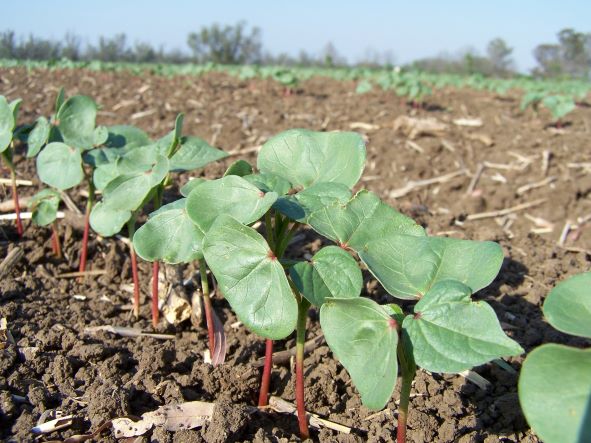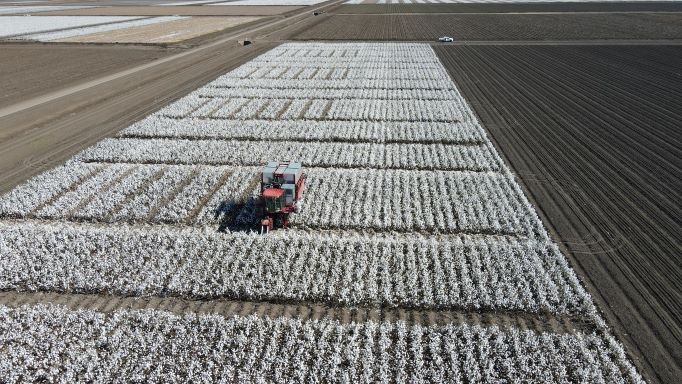Our research
ACRI is the primary centre for the Australian cotton industry. Research and development activities are being undertaken to deliver improved productivity and sustainable natural resource management.
NSW DPI invests in innovation and transformative technologies to deliver impact. The topics listed below are the key areas in which DPI is working with producers to create sustainable, resilient and productive crops. All the research programs listed below represent DPI R&D core business at ACRI. All projects listed below are funded by industry and government.
Current research includes:
Circular economy
Project - Closing the loop: textile waste composting for improved carbon footprint and sustainability
Textile industry contributes $2.4 trillion to global economy. While the industry supports lively hood of >300 million people, increasing textile waste in the landfills has a big environmental footprint. In fact, it is responsible for up to 8% of the world’s greenhouse gas emissions. Traditionally, composting is a preferred way to reduce textile load on landfills. However, contemporary textiles are produced by mixing synthetic non-biodegradable materials such as polyesters with natural and biodegradable fabrics like cotton which could reduce its compostability. In addition, inherently toxic additives such as dyes, pigments, etc can further impact soil health. There is a need to find a holistic way of composting textiles that ensures conversion of cotton into soil carbon. Identifying and incorporating a strategy for the textile waste will not only close the loop in circular cotton economy but ensure a better end-of life management. The project aims to support the goal of Circular Cotton by; optimising a method for composting cotton fibre, assessing the impact of composted cotton fabric on soil health and functionality, and determine the potential of composted cotton fabric to increase soil carbon and microbial activity. DPI is partnering with Newcastle University who are leading the project.
Cotton & grains farming systems
Project – Integrating research solutions for improving profitability in summer dominated farming systems
NSW DPI is currently undertaking long-term farming systems research in collaboration with CSIRO and Queensland Department of Agriculture and Fisheries (QDAF). Researchers based at Narrabri are undertaking a co-ordinated experimental program to examine a range of modifications to farming systems and quantify their relative impact on a range of measures of system performance. These modifications have been chosen based on consultations with growers, advisors and other researchers across the northern grains region and are targeted to address apparent current and emerging challenges to farming systems. Recent analysis suggests that 30% of crop sequences are achieving 80% of their potential water use efficiency. Similarly farming systems are going to face emerging challenges of increasing herbicide resistance, declining soil fertility and increasing soil-borne pathogens all which require responses in farming systems in order to maintain system productivity. NSW DPI and partners have established long-term experiments at both Narrabri and Gunnedah and the research infrastructure at ACRI is critical for science delivery.
Cotton & grain insecticide resistance
Project - Sustainable insect management through improved insect resistance monitoring
Insecticide resistance is a significant constraint to cotton production with the cotton industry having had first-hand experience of the devastating impact of lost productivity due to resistance development in key pests of cotton. Since the introduction of BT varieties, insecticide use in cotton has decreased. However, secondary pests such as aphids, mites, mirids and thrips have become more prominent in the cotton landscape. As a result of continued over-reliance on insecticides to control both chewing and sucking pest species, resistance has recently developed to important insecticidal classes such as abamectin resistance in two-spotted mite (TSM) and indoxacarb resistance in H. armigera.
Resistance monitoring programs within NSW DPI have provided science-based and measurable outcomes for protecting insecticidal products pivotal in the Australian cotton industry for over 30 years. NSW DPI has developed scientific leadership and technical expertise in field-based resistance research and has successfully developed and strengthened collaborative links to gain access to molecular technologies in resistance diagnostics.
Project - Fall armyworm resistance surveillance in the northern grains region
This project proposes to continue the surveillance of FAW populations from northern Australian to determine whether there are any specific insecticide use patterns, industries and/or regions where shifts in FAW susceptibility are emerging. This information will be critical to the development of Resistance Management Strategies (RMS) for FAW. The outcomes will be relevant to broadacre grains, cotton, fodder industries as well as the horticultural and nursery industries.

Cotton & grain weeds
Project – Improved management of weeds in cotton and grains farming systems.
While historically the Australian cotton industry has had a strong integrated weed management system, the extensive use of herbicide tolerant (HT) cotton varieties and the spread of weeds across the landscape has seen resistant and hard to control weeds emerge.
The need for knowledge of weeds and management tactics will need to remain contemporary, particularly as the industry continues to change, with expansion into new regions and farming systems, particularly rain grown systems and the launch of the third generation of herbicide tolerant traits, enabling over the top of the crop use of dicamba and glufosinate as well as glyphosate. The outputs from this project will strengthen the crop management plan for herbicide tolerant cotton and provide practical options for weed management which growers can apply directly to their farming systems
Cotton pathology & integrated disease management
Soil borne diseases continue to be one of the major constraints to cotton production and achieving maximum water and nutrient use efficiency in Australian cotton cropping systems. In view of the lack of reliable chemical control options currently, an improved ability to identify and manage natural disease suppression (DS) capability would assist in the strategic management of soil borne disease risks. This project will help to identify soil biological and physico-chemical elements to quantify disease suppression potential and identify management practices that promote disease suppressive systems.
Project - Characterisation and management of Alternaria leaf spot and black root rot pathogens of cotton in NSW
This project is an on-going effort of NSW DPI Cotton Pathology to monitor and control cotton diseases in NSW. Diseases such as soilborne black root rot (BRR), Fusarium and Verticillium wilts remain major concerns for the sustainable production of Australian cotton. For example, BRR has continued to increase in both incidence and severity in the Lachlan and Murrumbidgee to the point where a number of fields are no longer economic to grow cotton. Other re-emerging and emerging diseases including Alternaria leaf spot (ALS) and Eutypella wilt, respectively have also posed additional risks to the industry. Moreover, a sporadic, yet important boll rot disease (incidence up to 30% in a number of Namoi fields) has recently contributed significantly to yield and fibre quality reduction possibly due to conducive weather conditions in the past three seasons.
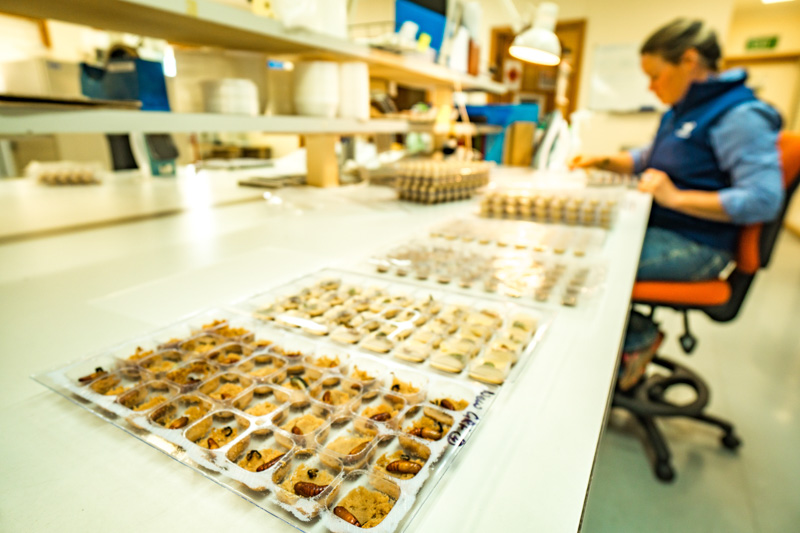
Environmental stewardship
Project - Tools for assessing and achieving pesticide sustainability targets for the Australian cotton industry
The Australian Cotton Industry has a history of pro-actively working to improve its environmental footprint. Although pesticides remain an important tool for controlling insect pests, weeds and pathogens, the industry has set sustainability targets to reduce the off-farm impacts of pesticides used in cotton production. There are numerous methods available for assessing the risk of pesticides, each with pros and cons. This project will calculate the current and historical pesticide-risk indicators of the Australian Cotton Industry using multiple methods, and identify which pesticides pose the greatest potential impact to humans and the environment.
The project will also develop and evaluate farm-scale pesticide-risk calculators that will allow cotton growers and their advisors to compare different pesticide application strategies in terms of their risk to beneficial insects and the greater environment. This will enable cotton growers to pro-actively reduce their environmental impact from the ground up. Targeted sampling and analysis of pesticides in soil, air and water in cotton catchments will provide additional information to validate or refine these assessments. In doing so, the Australian cotton industry will have greater confidence in its ability to set and reach sustainability targets and demonstrate to the supply chain and consumers a commitment to environmental best practice.
Plant breeding - Grains
Project - Chickpea Breeding Australia (CBA) Collaboration (2020-25)
The Narrabri research facility has been an important site for germplasm evaluation and seed increase activity. The Chickpea program received co-investment by the GRDC and contributes to the delivery of varieties with higher and more stable yield, fewer input requirements and improved seed quality. Increased reliability and profitability of chickpea production will underpin continued industry expansion. In 2020 NSW DPI leased an additional 70ha area adjacent to the research station to support the chickpea breeding program.
Project - Improving canola heat tolerance - a coordinated multidisciplinary approach (2019-2024)
Pre-breeding activities being undertaken at Narrabri include collaborative research to improve heat tolerance of canola. The aim is to screen germplasm and identify and ultimately supply Australian growers’ canola varieties that are better adapted to the northern grains region production environment (i.e increased high temperature tolerance above 32oC and yield stability). NSW DPI is providing datasets to pre-breeders and its science partners on this project.
NSW DPI has been proactive and successful in attracting commercial companies to utilise infrastructure at Narrabri. This strategy delivers potentially mutual benefits to industry and NSW DPI. Locating germplasm evaluation or NVT type trials on a research station usually allows greater control and access to irrigation if seasonal conditions turn dry.
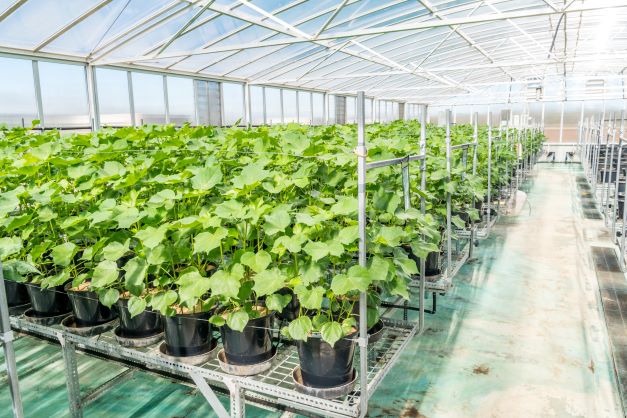
Pulse & cereal pathology
Historically ACRI has been an important delivery node for undertaking disease research. Pathology experimentation includes field trials to investigate and identify management options to control Phytophera Root Rot in chickpea, chocolate spot in fababeans.
Project - Benchmarking chickpea genetic gain of yield over the past 3-4 decades in Australia (2022-24)
Breeders have limited resources to achieve multiple competing goals. In chickpea, maintaining disease tolerance ahead of pathogen co-evolution is central to industry. Selection for yield potential is critical to drive actual yield in farmers' fields over decades. Comparisons of historic collections of varieties have been instrumental in quantifying the rate of genetic gain in yield and identifying shifts in phenotype associated with selection of yield and agronomic adaptation. Reliable comparisons of historic collections of cultivars are lacking in chickpea.
Project - NVT Pathology for generation of cultivar disease resistance ratings (2019-23)
Disease screening and variety rating field trails are being undertaken for NSW and Australian grain growers. A sound understanding of a crop variety’s resistance to common diseases underpins the management decisions of producers and their advisors.
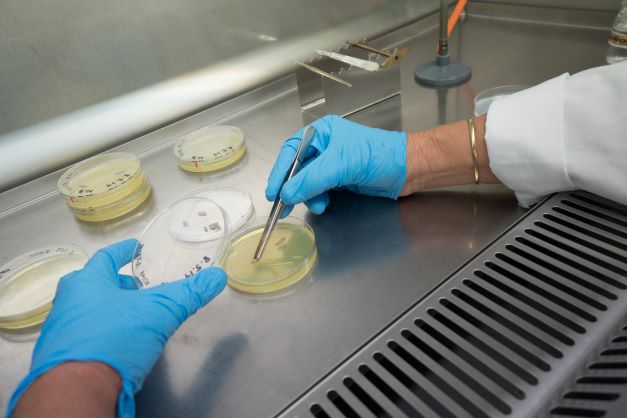
Soils & water
Project - Benchmarking soil carbon, soil properties and management between long term experimental sites and on-farm cotton industry sites
The proposed project will continue the long-term trial focussing on novel rotations to improve soil carbon and soil properties while initiating an additional SOC benchmarking across industry sites. Previous research has indicated there is a continuous decline with SOC over the long term. However, some studies have indicated tactical management options could improve SOC and minimise life cycle greenhouse gas emissions. The Narrabri research team will continue monitoring the residual effect of soil compaction and assess the number of wet-dry cycles required to naturally alleviate soil compaction, besides looking into a range of rotation crop’s effectiveness to alleviate soil compaction. This project will also re-estimate the soil carbon stocks of long-term trials using the equivalent soil mass method to improve the comparison of SOC with similar studies elsewhere.
Project - Water use efficiency for irrigated and dry land cotton benchmarked
The Australian cotton industry is a global leader in water use efficiency; however, as irrigation water becomes increasingly scarce, the Australian cotton industry remains committed to continual improvements in water use efficiency and demonstrating responsible use of our shared natural resources. This project is undertaking long term monitoring of water use efficiency in the cotton industry. DPI is employing streamlined, cost-effective data collection methods to deliver annual water productivity benchmarks, across the industry and within regions, for irrigated and dryland cotton.
